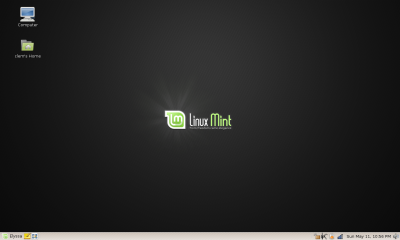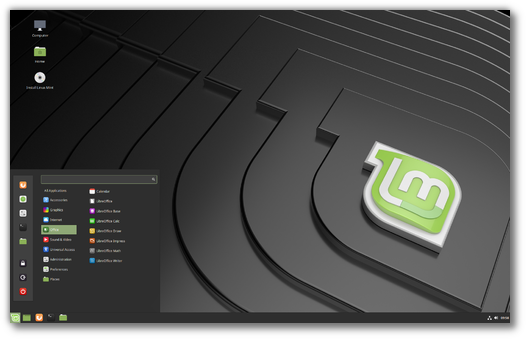
Kubernetes has become the go-to standard for managing containerized applications — but that doesn’t mean it’s simple to use. As your infrastructure grows, so does the complexity of deploying, scaling and securing clusters across multiple environments. That’s where a Kubernetes management platform comes in. In this blog, we’ll explore what these platforms do, why they matter and what to look for in a platform.
Kubernetes basics
Contents
- 1 Kubernetes basics
- 2 What is enterprise Kubernetes management?
- 3
- 4 Challenges of Kubernetes management
- 5 Enterprise Kubernetes management best practices
- 6 How to choose an enterprise Kubernetes management platform
- 7 SUSE for enterprise Kubernetes management
- 8 Adopting an Enterprise Kubernetes management platform
- 9 Kubernetes management platform FAQs
First things first, to fully understand the business advantages of managed Kubernetes, you have to understand what Kubernetes is and how it works. Here’s some helpful foundational info.
What is Kubernetes?
Kubernetes is an open-source distributed system that automates the deployment, scaling and management of containerized applications. It helps teams run applications reliably across different environments. With features like self-healing, load balancing and automated rollouts, Kubernetes simplifies operations and boosts scalability for modern, complex workloads.
Why are businesses moving to Kubernetes?
More and more businesses are moving to Kubernetes for good reason as most modern apps now are on containers. Managing containers by hand is impossible which is why Kubernetes is needed. Kubernetes fine grained control, automation, and innovation are what makes it special. All of the open source contributions and development no one company could match which is why Kubernetes improves so quickly. Here’s why enterprises love it:
- Portability: Run anywhere, from cloud to on-prem
- Scalability: Auto-scale apps based on demand
- Resilience: Self-heals and rolls back when needed
- Automation: Deploy and manage with less manual work
- Standardization: One platform, many environments
- Ecosystem: Massive tool and community support
What is enterprise Kubernetes management?
Kubernetes enterprise management refers to the tools, practices and processes used to operate and govern Kubernetes clusters at enterprise scale. Enterprises operate at a scale so large that unique challenges arise. While Kubernetes excels at orchestrating containers, managing it across hundreds or thousands of clusters introduces a new class of complexity. In enterprise environments, a misconfigured container or an unpatched image can quickly cascade, disrupting services across multiple clusters.
Massive scale amplifies the risks, teams must account for high availability across regions, uptime during upgrades, multi-tenant governance, and secure workload isolation. Visibility and observability become critical to quickly pinpoint and contain issues before they snowball. Without consistent guardrails, enterprises struggle to standardize deployments, track dependencies, and enforce policy especially in hybrid or multi-cloud environments.
Challenges of Kubernetes management
While Kubernetes itself is powerful and helpful, managing it at scale can be complex and time-consuming. Here are some of the common challenges enterprises face when trying to manage Kubernetes:
- Complex setup and configuration. Getting clusters up and running requires deep technical knowledge
- Security and compliance. Managing access, secrets and policies across environments can be difficult
- Multi-cluster management. Coordinating resources and workloads across multiple clusters adds operational overhead
- Monitoring and observability. Gaining real-time visibility into distributed workloads requires advanced Kubernetes monitoring tools
- Upgrades and maintenance. Keeping clusters, nodes and services up to date without downtime is challenging
- Resource optimization. Balancing performance and cost across dynamic workloads takes constant tuning
Enterprise Kubernetes management best practices
Kubernetes management at the enterprise level demands strategy, consistency and smart tooling. With some best practices like these, organizations can scale with confidence while maintaining security, performance and control.
- Use infrastructure as code to standardize cluster configuration and reduce manual errors.
- Regularly update clusters and apply security patches to protect against known vulnerabilities.
- Enforce consistent network and security policies across clusters using policy management tools.
- Automate deployment pipelines to streamline application delivery and reduce human error.
- Audit cluster activity and access logs to maintain visibility and support compliance efforts.
- Leverage multi-cluster management to maintain control and consistency across cloud, on-prem and edge deployments.
How to choose an enterprise Kubernetes management platform
Choosing the right enterprise Kubernetes management platform is essential for scaling operations, maintaining reliability and reducing complexity. As you’re looking for the right platform for your organization, here are some features you’ll want to look for:
Scalability across environments
Look for a platform that can manage multiple clusters across on-prem, cloud and hybrid environments and can handle high availability, workload distribution and dynamic scaling.
Strong community support
A vibrant open source community ensures the platform evolves quickly, stays secure and remains compatible with the broader Kubernetes ecosystem.
Integrated security and policy controls
Security should be baked in, not bolted on. Choose a platform with built-in role-based access control, compliance enforcement and secure defaults to protect workloads across all stages of the application lifecycle.
SUSE for enterprise Kubernetes management
SUSE Rancher Prime gives you a single, streamlined platform to deploy, secure and scale Kubernetes with ease. With built-in policy enforcement, powerful automation and a sleek, intuitive interface, it’s everything you need to run Kubernetes like a pro. Backed by SUSE’s rock-solid support and open source DNA, Rancher Prime helps enterprises move faster, stay secure and unlock the full power of cloud-native.
With Rancher Prime, you can:
Operate at Scale
Whether managing hundreds or thousands of clusters, Rancher Prime centralizes control across cloud, on-prem, and edge. With Fleet GitOps, you can automate continuous delivery to all clusters, reducing overhead while boosting agility.
Strengthen Security and Governance
Security and compliance are built in. Rancher Prime supports centralized policy management, RBAC, and CIS benchmark alignment. Integration with NeuVector delivers runtime container security and network segmentation, protecting workloads in real time.
Simplify Complexity with Automation
Automate Day-2 operations like upgrades, patching, and configuration enforcement with curated workflows. With Rancher Prime, platform teams gain consistency across environments without slowing innovation.
Deliver Consistency Across Teams and Environments
Developers can access approved Helm charts, hardened container images, and Kubernetes add-ons from the SUSE Application Collection. Rancher Prime makes it easy to provide self-service while enforcing enterprise guardrails.
Enable Observability and Optimization
With integrated support for Prometheus, Grafana, and SUSE Observability, Rancher Prime provides real-time insight into cluster health, workload performance, and system-level metrics.
Built to Meet the Demands of Enterprise Scale
At massive scale, even a single misconfigured container can create ripple effects across your environment. Rancher Prime was built to handle these realities with resilient architecture, high availability, and proven customer success. According to IDC, organizations using Rancher Prime achieve $3.4 million in average annual benefits.
Rancher Prime addresses every challenge outlined above: it simplifies setup with GitOps provisioning, enforces security policies by default, enables multi-cluster visibility, automates updates, and gives platform teams the tools to optimize resource usage. All while keeping you in control of your architecture.
Adopting an Enterprise Kubernetes management platform
Using a Kubernetes management platform unlocks the full potential of your cloud-native strategy. With the right platform in place, you can simplify operations, boost security, scale confidently and empower teams to innovate faster. Learn more how you can achieve 258% ROI with the right platform..
Ready to take control of your Enterprise Kubernetes strategy?
Discover how SUSE Rancher Prime can help you scale, secure, and streamline Kubernetes across every environment.
Learn more at suse.com/rancher
Kubernetes management platform FAQs
What is a Kubernetes management platform?
A Kubernetes management platform is a tool that simplifies the deployment, operation and scaling of Kubernetes clusters across different environments.
What are the top enterprise uses for Kubernetes?
Enterprises use Kubernetes to run scalable applications, improve resource utilization, manage microservices and support DevOps workflows across hybrid and multi-cloud environments.
Which is the best Kubernetes management platform?
The best Kubernetes management platform is one that offers scalability, security, ease of use and strong support for hybrid and multi-cloud environments. SUSE Rancher Prime is a leading choice for enterprises thanks to its centralized control, robust features and proven enterprise backing.
(Visited 1 times, 1 visits today)






